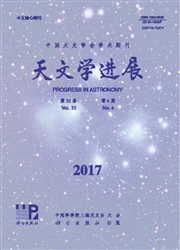

 中文摘要:
中文摘要:
网络技术的不断发展和望远镜远程控制技术的成熟让无人值守的程控自主天文台成为可能。把多个独立运行的程控自主天文台通过网络连接起来协同工作,就是程控自主天文台网络。程控自主天文台和概要式巡天在共同开启时域天文学并进而推动天文学跨越式发展的同时,也给研究方式和技术应用带来全新的挑战。回顾程控自主天文台网络的发展轨迹,总结实现的基本思路和逻辑结构,介绍科学应用,探讨随之而来的挑战,尝试分析在天文学上的发展前景和国内的发展战略。
 英文摘要:
英文摘要:
Developments in telescopes, detectors and software have greatly enhanced our ability to make astronomical observations. Powerful astronomical observation is very sensitive to its working environment, requiring it to be quiet as much as possible. Rapid urbanization over the past century has impacted this environment such that astronomical observations now suffer from light, air and electromagnetic pollution. To obtain better observational data and generate more scientific discoveries, astronomical observatories are forced to migrate to remote places or even into space. As a result of the migration, and the global nature of astronomy, observatories and scientific data are widely distributed. Meanwhile, multiband astronomy and time-domain astronomy are becoming popular fields in astronomy in the 21st century, both of which are based on federation of multiband and multi-time scientific datasets. Robotic Autonomous Observatory (RAO) and RAO Network (RAON) provide a science driven and technique enabled way to address the above problem. With the development of information technology and computer science as well as electro-mechanics, the automation of astronomical observation is undergoing rapid development, and consequently long term unsupervised observation is made possible. This becomes what we call "Robotic Autonomous Observatory". Following from this is the idea of connecting multiple robotic autonomous observatories via a robust computer network and making them interoperate. The connected system, namely "Robotic Autonomous Observatory Network", will enable observation around the clock in respect to a given object or covering large areas on the sky repeatedly, and the completeness of observations in time and space domains could be largely guaranteed. Time domain astronomy and data intensive astronomy are being enabled by the advent ot the new autonomous observation mode and synoptic sky surveys, which brings both new scientific opportunities and fresh challenges. This paper reviews the historical
 同期刊论文项目
同期刊论文项目
 同项目期刊论文
同项目期刊论文
 期刊信息
期刊信息
